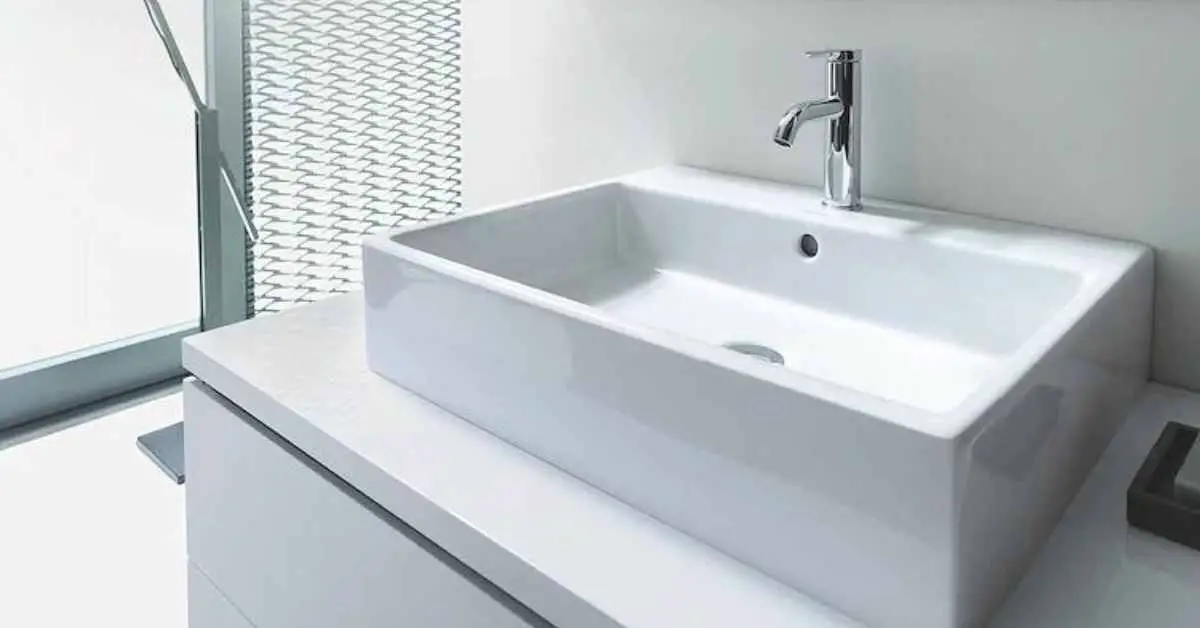Rectangular sinks are preferable for large bathrooms because they take up more space. They look stylish and attractive but are challenging to clean and maintain.
Are Rectangular Bathroom Sinks Hard to Clean? Rectangular bathroom skins are hard to clean because of the bottom corners, different types of material, and standing water, which causes mold growth. You can clean the sinks using warm water, mild detergent, and a soft sponge that does not affect the finishing. It is better to clean the fixture once a day to prevent mineral deposits.
They are frequently installed in public restrooms because they provide more space and avoid germs and splashes on the countertops. However, the pedestal sinks are not child-friendly, as they find it difficult to reach the faucets and wash their hands or face.
Why are rectangular bathroom sinks hard to clean?
They are hard to clean because many people are not used to these sinks and find cleaning and maintaining them difficult. Different brands use manufacturing material that is hard to clean because of the porous surface.
The porous surface can absorb moisture and causes mold and mildew to grow there, which affects its appearance and durability.
The water can stand in the corners and rectangular sides, which causes bacteria and fungi to be around the corners. This can increase the chances of disease from fungal accumulation if you do not have enough time to clean the fixture.
The rectangular fixtures in the small bathrooms have more chances to get the dust and dirt from outside when you open the windows for air circulation.
You can clean the fixture after every use because the water drops can stand in the corners and cause calcium buildup.
In addition, the soapy water, makeup products, oils, and toothpaste on the surface can cause the sink to look unattractive and messy.
These things at the corners are tough to clean and remove because they can trap in the porous surface. As a result, it takes more time and hard work to clean the bottom edges.
You need to wash your hands after gardening, painting, or any other activity, which cause stain on the surface.
The dirt and paint colors accumulate at the corners and form grime if you ignore the cleaning for a few days.
How can you clean the rectangular bathroom sinks easily?
You can clean the rectangular skins using a sponge, mild detergent, and warm water.
Remove the stuff, such as makeup products, hand and face wash, and other things from the countertop for a thorough and deep cleaning of the fixture.
Now take a bowl with warm water and pour some liquid detergent into the bowl. Do not forget to wear rubber hand gloves before starting the cleaning process if you have sensitive skin.
Now take a medium size sponge, dip it into a bowl, and squeeze it softly such that the detergent is not removed from the sponge completely.
Pour some hot water around the corners of the rectangular bathroom sinks to loosen the stains and mineral buildup, and scrub the surface with the sponge. Put some detergent liquid and warm water solution on the surface and corners, and clean the sink thoroughly.
It is better to use the new sponge instead of a used and old one because it will not scrub well on the hard stains. You can also use a small thin brush with thick bristles if you do not have a sponge in the house.
Let the detergent stay on its surface for 5-10 minutes, and then wash it using warm water from the tape. Leave it to dry appropriately and notice if the fixture still has deposits and stains.
You can repeat the process, and this time you can use a high-quality bathroom fixture cleaner. Read the instruction on the cleaner’s label to ensure you can use it on the sink.
You can use diluted bleach mixed with water to remove the stubborn stains on the edges. However, avoid using it on the entire surface because it can cause the color to fade.
Wash the sponge with fresh water after cleaning so you can use it later for cleaning the sink or other fixtures. However, the wet sponge can be a breeding ground for mold and bacteria, and you cannot use it again if you place it without drying.
The marble and granite sinks are strong; you can use white vinegar and lemon juice solution mixed with water to clean them. The surface is highly polished, and you can easily clean the bottom edges and curves using a soft cloth.
How often should you clean the rectangular bathroom sink?
You can clean the bathroom skins once a day to avoid the grime and mineral deposits around the base edges and rim.
You can clean it twice daily if you have kids in the house because they can drop toothpaste and makeup products on it.
The cleaning period also depends on the number of people using the fixture.
Moreover, you should clean it frequently if there is only a single bathroom in your place. Every family member uses the same fixture to wash hands and face, do their makeup, and shave.
You have to face embarrassment in front of the guests when they use the sink to wash their hands. The stains around the rim and edges look unpleasant.
The body and hair oils in the corners can attract spiders and bugs if you do not clean it. Therefore, it is better to remove the oils and other particles from the surface, which avoid bug and other insects.
It is better to clean it every week even if you do not have a guest in the house because this shape is more prone to keep the water in the corners.
Regular cleaning and maintenance can enhance the durability of rectangular bathroom sinks because the stains and mineral deposits make the fixture look rough and worn out soon.
Related Articles:

